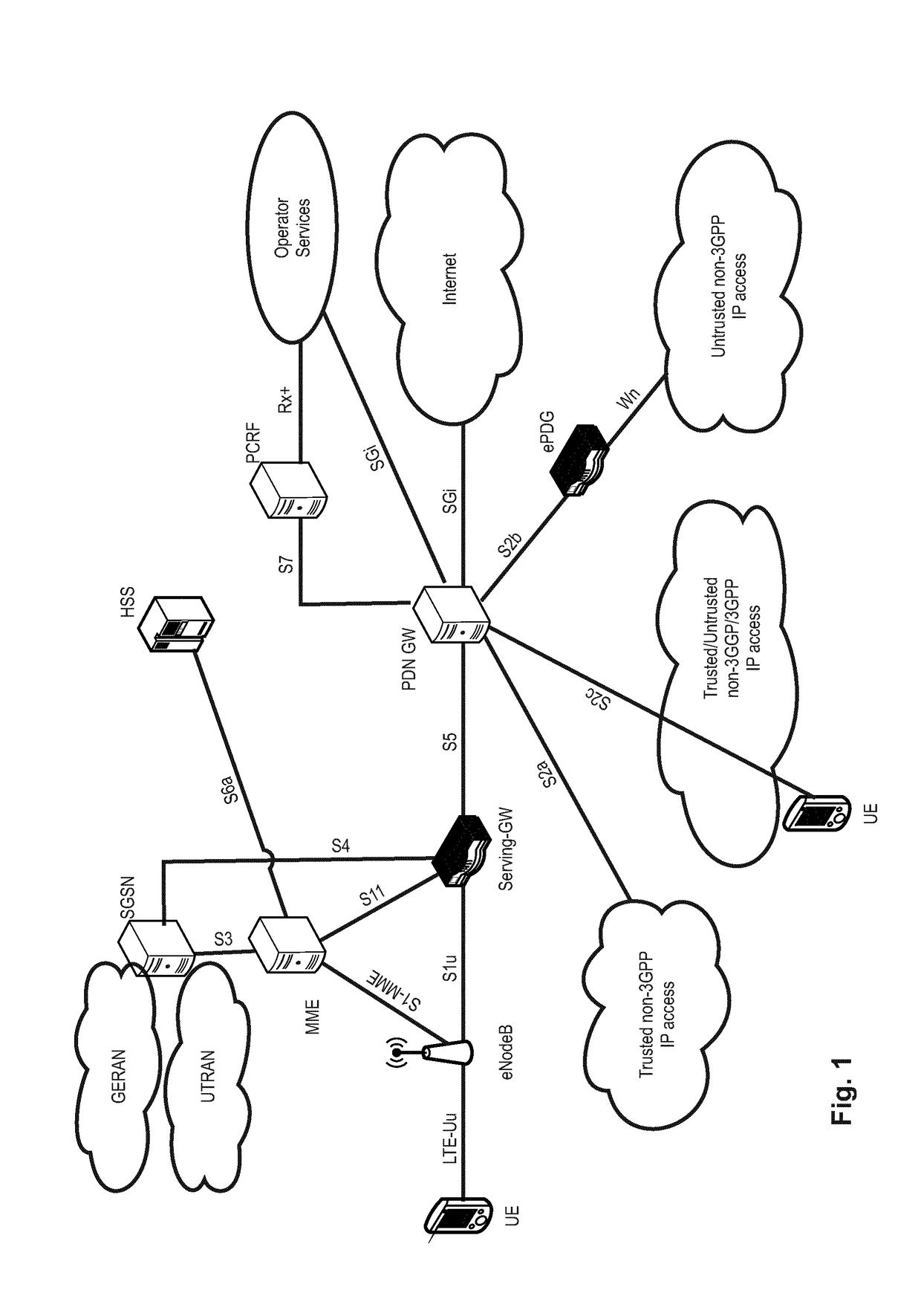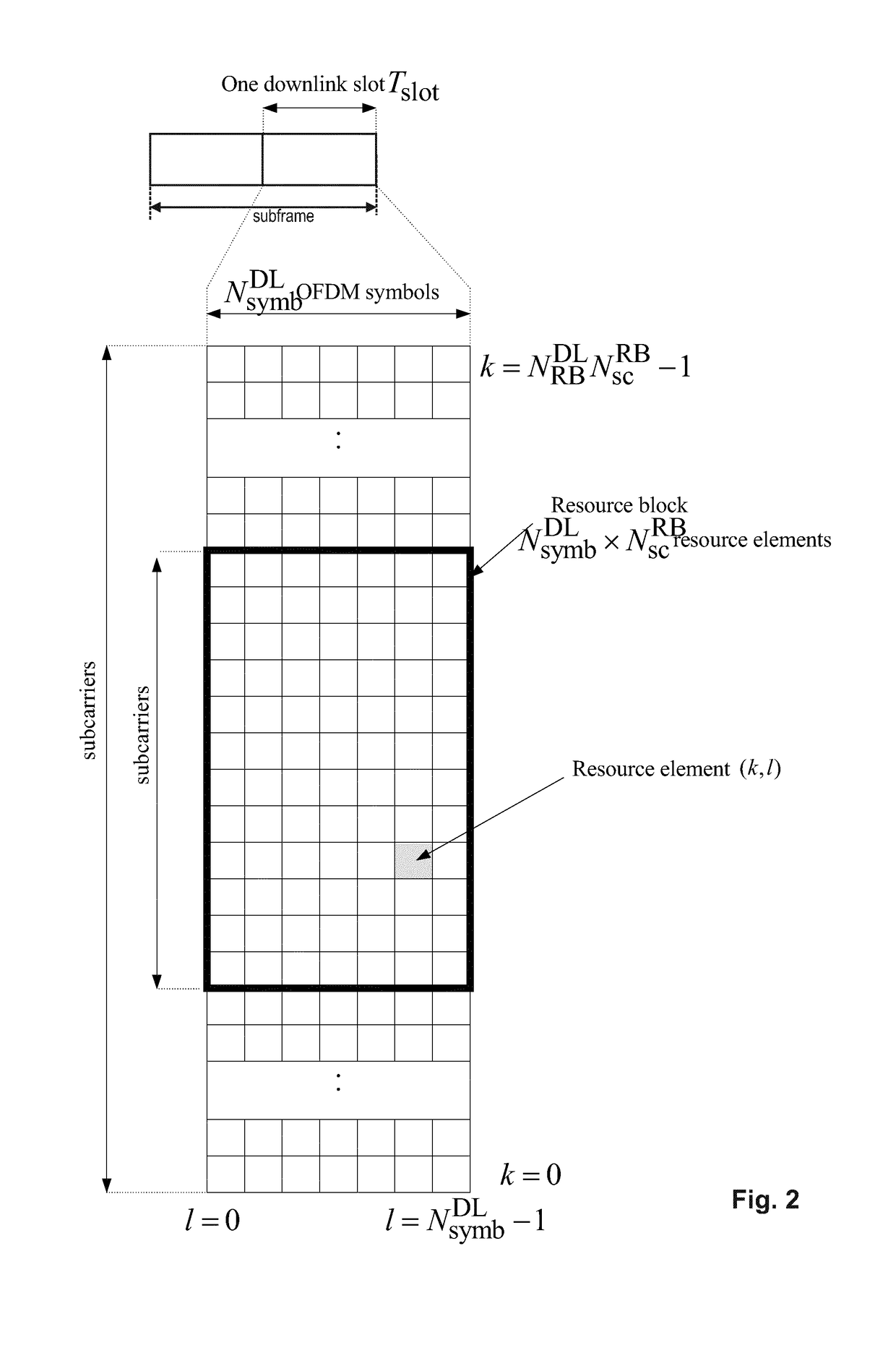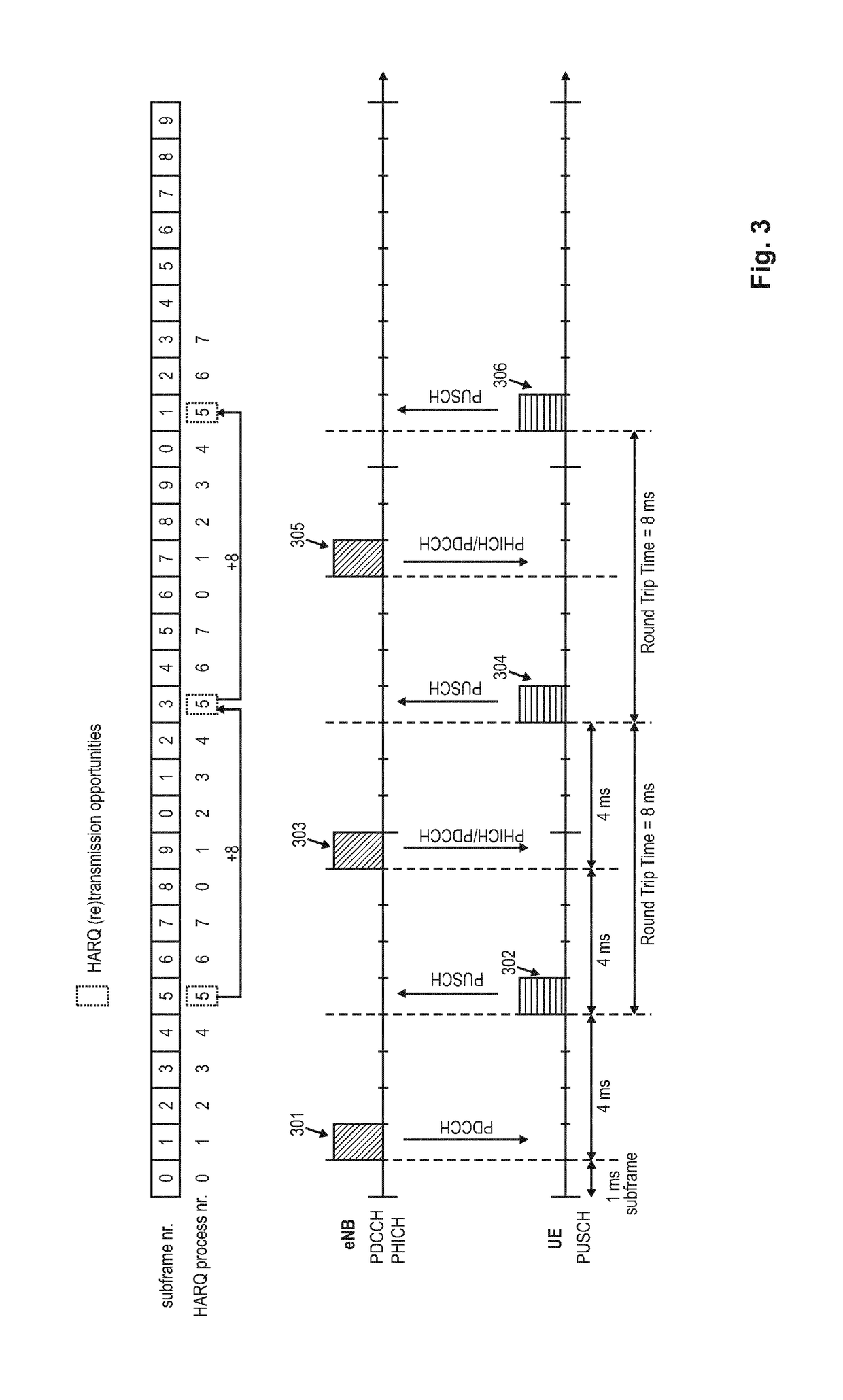Improved uplink HARQ operation for prose-enabled ues participating in sidelink discovery operation
a technology of sidelink discovery and transmission protocol, which is applied in the direction of digital transmission, error prevention, electrical equipment, etc., can solve the problems of not being able to configure a mobile terminal, not being able to find a spectrum band wide enough for the lte-advanced system, and being unable to use a mobile terminal. , to achieve the effect of reducing the number of sidelink discovery operations, and improving the quality
- Summary
- Abstract
- Description
- Claims
- Application Information
AI Technical Summary
Benefits of technology
Problems solved by technology
Method used
Image
Examples
first embodiment
[0352]In the following a first embodiment for solving the above-mentioned problem(s) will be described in detail. Different implementations and variants of the first embodiment will be explained as well.
[0353]Exemplarily, a user terminal is assumed that performs uplink data packet transmissions e.g., to its serving base station, over a carrier (e.g., the PCell) via the PUSCH. The UE will operate at least one (re)transmission protocol, e.g., the MAC HARQ protocol, to control the transmission and retransmission of MAC PDUs, also termed data packets or transport blocks. Corresponding HARQ entities and HARQ processes will be set up in the UE in a usual manner; for the embodiments described herein, the transmit HARQ entities and corresponding HARQ process are relevant. Transmissions and retransmission in the uplink will be under control of the HARQ transmission protocol of the UE. A transmission counter will be set up for each HARQ process so as to keep track of the number of transmissio...
second embodiment
[0379]In the following a second embodiment is presented which deals with the same problem as the one solved by the first embodiment, i.e., the one explained at the beginning of the detailed description.
[0380]The same assumptions as made for the first embodiment can be made for the second embodiment too. In brief, the UE is assumed to operate the MAC HARQ protocol with corresponding HARQ entities and HARQ processes, thereby controlling the transmission and retransmission of MAC PDUs, also termed data packets or transport blocks. A transmission counter will be set up for each uplink HARQ process, and the UE will be configured with a maximum counter value which indicates the maximum number of allowable transmissions of a data packet served by this transmission counter and HARQ process. Upon reaching this maximum number of allowable transmissions in the transmission counter, the corresponding buffer of the HARQ process will be flushed. Feedback for the uplink HARQ protocol operation wil...
third embodiment
[0396]In the following a third embodiment is presented which deals also with the same problems solved by the first and second embodiments. The same assumptions as made for the first and second embodiments can be made for the third embodiment as well. In brief, the UE is assumed to operate the MAC uplink HARQ protocol with corresponding HARQ entities and HARQ processes, thereby controlling the transmission and retransmission of MAC PDUs, also termed data packets or transport blocks. A transmission counter will be set up for each HARQ process and will be particularly used for flushing the buffer associated with the HARQ process for a data packet in case the counter reaches a maximum number of allowable transmissions. Feedback for the HARQ protocol operation will be received by the UE via the PHICH and / or an uplink grant via the PDCCH. Again, a specific exemplary implementation of the second aspect may be based on the MAC HARQ protocol as explained in the background section, following ...
PUM
 Login to View More
Login to View More Abstract
Description
Claims
Application Information
 Login to View More
Login to View More - R&D
- Intellectual Property
- Life Sciences
- Materials
- Tech Scout
- Unparalleled Data Quality
- Higher Quality Content
- 60% Fewer Hallucinations
Browse by: Latest US Patents, China's latest patents, Technical Efficacy Thesaurus, Application Domain, Technology Topic, Popular Technical Reports.
© 2025 PatSnap. All rights reserved.Legal|Privacy policy|Modern Slavery Act Transparency Statement|Sitemap|About US| Contact US: help@patsnap.com



